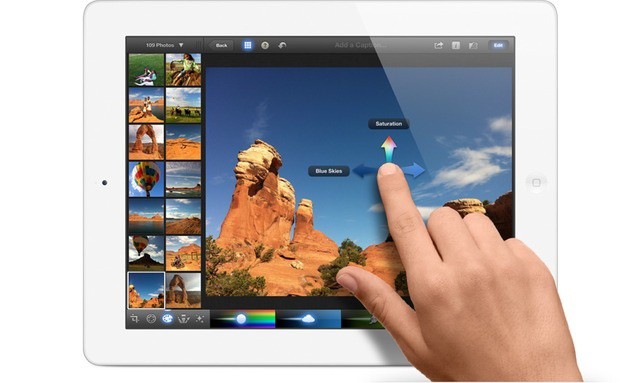


- #Iphoto for mac review 2012 mac os x
- #Iphoto for mac review 2012 upgrade
- #Iphoto for mac review 2012 pro
- #Iphoto for mac review 2012 windows
In the end, I think the 1680 x 1050 option will attract high res 15" MacBook Pro shoppers, as will the 1920 x 1200 option attract former 17" MacBook Pro shoppers (Apple didn't refresh the 17" laptop and it's on the way out since relatively few folks bought it). But the difference is indeed subtle compared to the jump from standard definition TVs to HD TVs. It's not the Emperor's New Clothes: it's for real. The longer you use the Retina display, the more non-Retina displays and apps look sub-par. The Retina optimized app has sharper fonts with no jaggies while the non-optimized app looks fuzzy on close inspection. On the actual Retina display, it's not as distinct a difference, but it's still noticeable. The screen shot is shown at 100% zoom, and that's where the difference is apparent. The 13" Retina MacBook Pro on top of the 15" Retina MacBook Pro.Īt the right we have two screen shots taken of the Chrome web browser (not Retina enabled) and Chrome Canary (Google's beta browser with Retina support) so you can see the difference. Likely more apps will follow and we'll see Retina display optimization for a wider selection of software. OS X and Apple's own apps have been updated for the Retina Display, and so have Diablo III, Photoshop 6 and Chrome Canary (a beta version Chrome). Otherwise text will look like its old fuzzier self and images won't have that extra bit of detail. The sharper bit only holds true if the app supports the Retina display. Even 1920 x 1200 runs at hidpi: if you use the Grab app to take a screenshot of the entire display, it will be 3840 x 2400 even if the assigned scaled resolution is 1920 x1200. Thanks to Apple's high dpi technology, you'll get more pixels so things look sharper at any resolution. But the display itself isn't just marketing fluff. 1440 x 900 at 110 or 72 dpi- that's marketing for you. It might make more sense to describe it as 1440 x 900 at 220 ppi vs. Confusing? Yes it is because no one has ever done this with computer displays.
#Iphoto for mac review 2012 upgrade
You can run it at 1680 x 1050 (an optional upgrade resolution for the standard 15" MacBook Pro) or 1920 x 1200 and it looks great. What I really like are the display options for various higher scaled resolutions rather than being stuck with the lowly 1440 x 900 standard 15" MacBook Pro resolution. Top to bottom: 13" MacBook Air, MacBook Pro with Retina Display and 15" MacBook Pro. Select scaled resolutions to change your workspace resolution. OS X refers to anything other than "Best, Retina" (workspace equivalent to 1440 x 900 with high dpi rendering that uses 2800 x 1800 pixels) as scaled resolutions. You can choose from 1440 x 900, 1680 x 1050, 1920 x 1200 as well as lower resolutions and you'll see the same amount of desktop/workspace as on any other computer at those resolutions.

#Iphoto for mac review 2012 windows
In usable desktop workspace terms, the resolution setting works as it does on any other Mac or Windows PC. That makes for noticeably sharper text and images that pop. Regardless of the resolution you select under display scaling, it's rendered with 4x the pixels per inch of other notebook screens. You're getting the same amount of words/spreadsheet cells/photos on the screen, but everything is rendered with more pixels squeezed into every square inch.
#Iphoto for mac review 2012 mac os x
What exactly does Retina mean on a computer where resolution is tied to how much you see on screen (spreadsheet cells, words per page in a document or web page)? Mac OS X now increases pixel density for the Retina, so you're getting 220 ppi rather than the usual 110ppi. Retina Display: Emperor's New Clothes or Worth Buying? But the biggest change is the Retina Display, a term we're familiar with on the iPhone 4S and new iPad. Still, it's as close as we'll get to a 15" MacBook Air at the moment, and the MacBook Pro with Retina display is more than twice as fast, placing it squarely in the Pro class among MacBooks.

At 0.71", it's nearly as thin as the 13" MacBook Air at its thickest point, but it lacks the Air's recently patented taper, and it's not nearly as light as the 3 pound Air. The unibody casing introduced in 2008 is alive and well, but the Retina is 25% thinner than the MacBook Pro 15", and 1.1 pounds lighter at 4.46 pounds. It's put together as perfectly as you'd expect from an Apple product and it looks stunning in a quiet and tasteful way. This is Apple's next generation MacBook Pro and it brings a slimmed down design, lighter weight and new ports: HDMI and two USB 3.0 ports. The MacBook Pro with Retina Display has only been out a few days, yet it hardly needs an introduction. 2012: Also read our review of the 13" MacBook Pro with Retina Display. What's not: Expensive, parts not upgradable. What's hot: Slim, light, fast and that Retina display! Home > Notebook Reviews > MacBook Pro with Retina Display (2012, 15")ġ5" MacBook Pro with Retina Display Editor's rating (1-5):


 0 kommentar(er)
0 kommentar(er)
